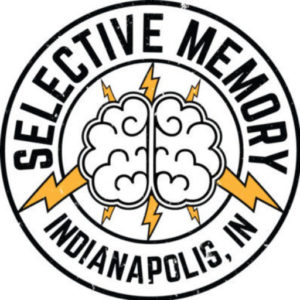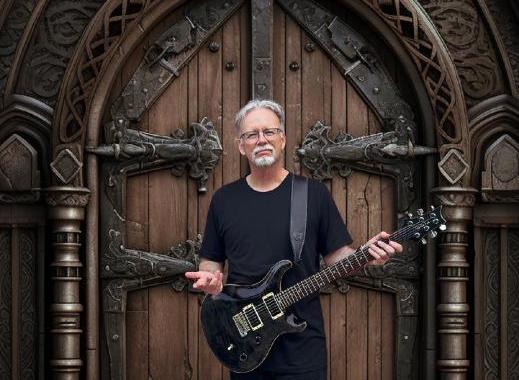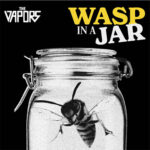Guitarist and songwriter for the band TILES, Chris Herin wanted to release a solo album but needed a lot of help from his friends. Make that more than 30 of his friends and supporting musicians from a wide gamut of talent. Enter Hiding in Plain Sight, an album that showcases stamina from the exceptional talent and technique of this musician.
The music took years to develop and refine. During that journey it became his greater purpose and an unconscious way of dealing with his father’s Alzheimers. What resulted was a deeper connection with his listeners. Even in its current element, Hiding in Plain Sight embeds a lot of history. Herin indulges in a deep discussion over the albums concept, it’s recording, and what it all means for him.

How did this album and music in general serve as therapy during your time being with your father?
I didn’t set out to make my dad’s situation or my family’s experience with Alzheimer’s the “theme” of an album. As a concept it would seem a little dark and heavy – and too personal. Musically, the songs had been demoed over the span of a few years (complete with ‘wordless’ melody lines) and when I first began writing lyrics, I just happened to draw upon a couple events from the period of my dad’s illness.
It gradually occurred to me I was rekindling my connection to some of those experiences, and I continued to write about that time period’s events and perspectives. I dug up my notes and started using bits and pieces I had captured from those years as a starting point. My dad’s been gone a little over 12-years now but writing about Alzheimer’s never occurred to me before I drifted into it. I really wasn’t quite sure it was a good idea and tried not to be heavy-handed with such a sensitive topic. I didn’t want to be depressing and hopefully softened the edges and left the lyrics open to different interpretations.
I do feel revisiting and contemplating my dad’s and family’s experiences was valuable beyond just having topics to write about. I don’t know if it was actually ‘therapeutic’ but there of course was a deep emotional connection with the skeletons I was digging up – some pleasant and some not so much. Seeing through the lens of hindsight helped me view things a bit more objectively. I was able to confront what I had viewed as mistakes – and softened some misgivings I’ve carried all these years. No one in my family or I had much awareness of Alzheimer’s or anything dementia-related, meaning we floundered for a long time before we got an official diagnosis and understood what was happening. I have always felt I could have made better decisions – and sooner. Then with my mom passing away four months after my dad – and with me taking care of estate duties – I admit I probably didn’t really allow myself to properly grieve for either of them. It was a lot to take in and the momentum of “business” took over for quite some time.
As writing progressed and the theme of the album came into focus, I developed a greater sense of purpose. I felt I could bring a basic awareness to people who might be unaware like I was when my dad first showed symptoms. But really, although the specter of Alzheimer’s was always hovering close by, I could recall many meaningful and pleasant experiences shared as a family – moments I hadn’t recalled in quite a while. I feel I was successful touching upon some experiences that could connect with listeners.
What did you learn through your perseverance and the human spirit?
Life has an inertia that requires putting one foot in front of another even when you’re down, out of energy, or not feeling too motivated. Human nature has given us an inner strength that helps us rise to the occasion and keep moving forward – even if this may be a difficult or slow process. Of course, there are real philosophers who have articulated wisdom about the human spirit better than I ever could, but during difficult times I’ve discovered taking small actions in a positive direction gets the ball rolling and momentum gradually builds. During my dad’s illness, although there was always a black cloud hovering overhead and the “bad” outweighed the “good” as time passed, I learned to make a conscious effort to recognize and enjoy the pleasant moments. Maybe that’s because those were so much more obvious when bookended by not-so-good times! The predestined outcome of the disease didn’t allow for complacency so awareness that time was limited out was a constant companion.
What was the motivation behind Hiding in Plain Sight and how long did it take to create something as conceptual as this album?
I wish I could say I had the project all mapped out and simply got down to business with laser-like focus! “Hiding in Plain Sight” is kind of an accidental album born out of circumstances and opportunity. I felt no urge to do an album outside of Tiles, nor did I plan on tackling a specific concept. Over the years I have demoed songs with Terry Brown so there is always a backlog of tunes in various stages of development. After Tiles vocalist Paul Rarick retired a few years after “Pretending 2 Run” was released the band went on hiatus. After a while I thought I’d finish some songs already started with a few friends just for fun – and wasn’t entirely sure they’d even be released! The project really took about 5-years of intermittent yet consistent effort to complete. It was a gradual process of enlisting musicians to contribute what I couldn’t – which is pretty much everything except guitar!
Lyrically it was a similar unscripted approach as mentioned before. “Second Ending” and “White Dandelions” were the first two songs written and they both draw heavily on a couple experiences I had during my dad’s affliction. From that point on I went back to my trusty notebook of draft ideas written during those times and began to purposely delve into various aspects of the illness and family experience – and as mentioned before a stronger sense of purpose developed. I will admit the last couple sets of lyrics were a bit of a struggle as I searched for new angles. I didn’t want to cover the same ground over and over. Even though the songs don’t strictly tell a linear story, throughout the writing process I kept an eye on the overall arc of the album, so it had a progression to the narrative.
You had help through some big names behind the boards. How did Terry Brown and Peter Moore help your vision?
I’ve had the pleasure of working with both Terry and Peter since 1996 when they were enlisted to mix and master the second Tiles album “Fence the Clear.” They stayed onboard with all the Tiles projects up through our latest album “Pretending 2 Run” (2016). I periodically demoed songs with Terry over the years and when “Hiding in Plain Sight” gathered momentum as a project it was great to keep our creative relationships going. Terry was essentially an equal partner – not only wouldn’t the album sound as good as it does, but the arrangements and coordination of guests simply wouldn’t have happened without his input.
He did a fantastic job taking a wide variety of players and making the album sound cohesive. Objectively, Terry has crafted a truly impressive work of sonic art! The term “producer” takes on different meanings in every situation. Some are simply project managers; others are involved in song structure, arrangements, and instrumentation (to varying degrees); some are technicians who perform engineering, recording, and mixing duties; most producers offer opinions on performances and facilitate input from band members; and all producers bring psychology and diplomacy to the creative proceedings. Terry has performed all these tasks since we brought him on board in a full producer’s role for “Window Dressing.” Prior to that he joined at the end of the “Fence the Clear” and “Presents of Mind” projects to do the final mixing. We (Tiles) have had an open dialog with Terry and discuss everything from how to approach the song: sounds and tones, instruments, tempos, and even details like snare drums, ride cymbals, or thickness of the pick I’m using (!). Even though we had so many different musicians recording remotely we still had discussions with practically all of them on recording techniques and what we were looking for in their performance. Although about 50% virtual, “Hiding in Plain Sight” was still a dynamic collaborative process and not just crossing fingers and hoping for the best.
Peter Moore had worked with Terry for many decades as his right-hand man. As the mastering engineer he puts the final touches on the mixes by adding compression and frequency equalization (EQ), organizes songs in their running order, and provides the media from which CDs and records are manufactured. Peter was a renowned producer and engineer in his own right with gold and platinum awards to his credit and had a remarkably elaborate mastering lab. In fact, his skills included salvaging songs off damaged tapes and restoring them was rewarded with a Grammy for Bob Dylan and the Band’s Complete Basement Tapes Vol. XI. Peter passed away November 2023 after battling cancer. “Hiding in Plain Sight” was mastered just before then. His last round of treatments were very rough on him but he persevered and did his usual excellent work. Peter had a degree in anthropology and was a profoundly interesting and informative conversationalist. Previously, I was always present while Terry and Peter worked, and I regret not being able to attend the mastering sessions this one last time.
And speaking of big names, the laundry list of huge celebrity musicians on this album is incredible. How did you orchestrate it all?
As only a guitarist and minimally proficient keyboardist I knew I needed to enlist a lot of help. I brainstormed a roster of potential musicians and set about making contacts. I started by recruiting my talented musician friends like Kevin Chown, Matthew Parmenter, Mark Mikel, Tim Michling, etc.
Throughout recording there were always lots of “irons in the fire” so to speak at any one time. Initial contacts, logistics, what we were looking for musically, technical communications with Terry, file sharing, live sessions, etc. were always in progress. Of course, the list was always changing as the needs of the songs came more into focus. For example, I’m a fan of Tim Bowness and asked him to sing “Safe House (Asylum)” because I “heard” his vocal style fitting the song. Then I realized the textures and soundscapes Colin Edwin conjures up would complement Tim’s performance. Each song went through a similar building block process where the parts previously recorded informed the next steps.
With my associations and Terry’s high-profile connections we kept making contacts. Sometimes we continued to impose on people multiple times! I can only recall one vocalist who politely turned us down – and I understood the reason why. It speaks to the generosity of the musicians who “donated” their time and talent or charged a drastically reduced rate because of the charitable objective of the album. Most guys are career musicians, and I was only too happy to at least give them something for their effort.
As an experienced project manager for my “day job,” I knew maintaining a master Excel spreadsheet of all the songs and tasks was the only way I could keep track of what was done and what needed to be done; what part was recorded by whom; date recorded; where recorded; next steps; and other bits of work in progress information. I think it was around 40 columns wide! This was even a bigger challenge than for the most recent Tiles album “Pretending 2 Run” – which also required an enormous amount of documentation (as you can easily surmise by looking at those liner notes!).
What moments in collaboration surprised you the most?
There were dozens of great moments! I don’t think I heard a guest performance for the first time that didn’t bring an enthusiastic smile to my face. There were no surprises from the standpoint someone’s parts wouldn’t be good enough – that was certainly not a concern. But I was always pleasantly surprised when I heard the direction someone took. Some of the biggest highlights were songwriting collaborations with Terry Sampson, Matthew Parmenter, and Kevin Chown. It was interesting to see how they reworked and tweaked what I gave them. Especially Terry Sampson. As a professional songwriter he brought his skill to bear on “The Heart of You” – moving sections around, a slight chord change here and there, or adjustments to the melody line. I think Peter Frampton’s enthusiasm to participate in a large part was based on how much he liked the song. It seems to be most everyone’s favorite song on the album!
I hate to single anyone out because it implies other performers didn’t deliver the goods – which is not the case. But I recall feeling that Ben Riley’s drum tracks were special. He intuitively captured the pulse of a song, and his fills and transitions were always perfect. He’s a professional drummer and friend of Terry Brown’s and Terry suggested we give him a crack at a tune. I think he did “Living in the Night” first and after that it was a no-brainer to have him tackle three or four other tunes. Something unexpected though was David Barrett’s slide guitar on the end of “Second Ending.” The sound is so unusual and really projects a feeling of the sun gradually peeking through the clouds after a big thunderstorm.
I love the intricacies in compositions that show up in your music. How did you put thought into the fine details of the album?
As arrangements develop, I usually hear interlocking or layered parts. Like most musicians I’m a product of what I listened to growing up, studied, and enjoyed all these years. The songs I tend to write happen without certain goals or objectives I guess – but reflect what I like to hear. As I look back – and I didn’t know it at the time – from a very young age I was always attracted to odd meters and complexity. Rush, Genesis, U.K., jazz/rock fusion like Al DiMeola, Kansas, Jethro Tull, etc. I’ll introduce little twists and turns throughout the writing process, but I’m careful these days not to get too tricky or sacrifice musicality. I learned a lot with our “Window Dressing” album (2004) where I did wade a bit too far into the “complicated” deep end on a couple songs. Anyway, sometimes when I have to chart out a song I’m surprised by time changes I didn’t realize were there – which is a good thing because it’s not good to be contrived.
For someone like me who has a linear train of thought, instrumentation and arranging (orchestration) is a layering and building block process. Sometimes I’ve let a song become too dense or cluttered and I have to reverse course and do some pruning. Terry is usually the one who points this kind of thing out and I leave most of the editing to him. He’s good at hearing from the listener’s perspective and tracking which melodies and parts should be the focus. But sometimes you have to add something to convince yourself not to add something! Digital world facilitates experimentation! As you can hear on “Hiding in Plain Sight” and especially way back to “Pretending 2 Run” I’ve settled into “full bodied” arrangements lately.
How did prog rock influence your methodology to explore Hiding in Plain Sight.
I think my “progressive” influences give me a sense of adventure and tend to keep me from being locked into traditional or commercial song structures. Of course, this is easy for me to do since I don’t have expectations or pressure placed on me by a huge fanbase or record company. I’m quite relieved my Tiles “legacy” helped me slip in “Hiding in Plain Sight” under the progressive rock banner! Most songs certainly contain progressive elements and a bit of what you could call art rock, but I admit it probably doesn’t pass as a blue-blooded prog album by today’s definition. There are some tricky bits that probably aren’t too noticeable to listeners like “Slow to Crumble’s” odd meter choruses, the quirky song structures of “The Darkest Hour” and “Wilderness Years,” or the multi-section “Second Ending.” I guess when I start to dissect the songs I do see a decent amount of progressive elements but certainly not like Dream Theater, Transatlantic, Neal Morse, etc.
What are you most proud of?
I guess I’m most proud of writing and co-writing songs that were interesting enough to lure such a notable collection of excellent musicians to participate. Recording “Hiding in Plain Sight” was challenging as the songs began to coalesce into an album and the lyrical theme developed. Terry and I worked hard to achieve a cohesiveness among a variety of styles. It’s less-than-happy subject matter so I knew an overall melancholy vibe was unavoidable, but we wanted to ensure things didn’t get downright depressing. There’s a connection between songs that helps balance the album – so it seems less like a random collection. Each song is completely different but the consistent message links everything together, so the differences end up being a strength not a weakness. At least we worked toward that goal…
I’m proud of finishing too! There were a few times when I was ready to throw in the towel. Many thanks to Terry for continued belief in the worthiness of the project and to Ken Golden at the Laser’s Edge for being patient, wise, and helping to navigate difficult decisions.
How do you follow up from an album of this magnitude?
I’ve been working with Terry and Hugh to prepare for the April 2025 vinyl release of “Hiding in Plain Sight” via Leftoverture Records in Holland. We were on a tight schedule to meet the European Record Store Day timeline, but I think we’re ok. It’s a gatefold with two albums, contains four bonus tracks (15 songs total) and a completely different running order, and lots of additional artwork. It will be limited to 750 copies and really turned out great! The album won’t be released in the U.S. but www.lasercd.com will carry import copies.
As for an actual follow up project, at this point I’m not quite sure what’s next. I suppose anything is possible. We might bring Tiles out of hibernation, maybe even with the guest vocalist approach (?). I’m still busy with promotional activities (behind actually!), but I am back into songwriting mode. I’ve been putting the finishing touches on a couple long format songs that have been languishing a while and there are hours of song bits to peruse. I’ll probably first tackle the ones that have stuck in my brain!
Also, I have finished my guitar parts for the next Discipline. album which is scheduled for a fall 2025 release. It’s almost ready for mixing. Thanks for the interview – and thanks for reading!




No Comment! Be the first one.